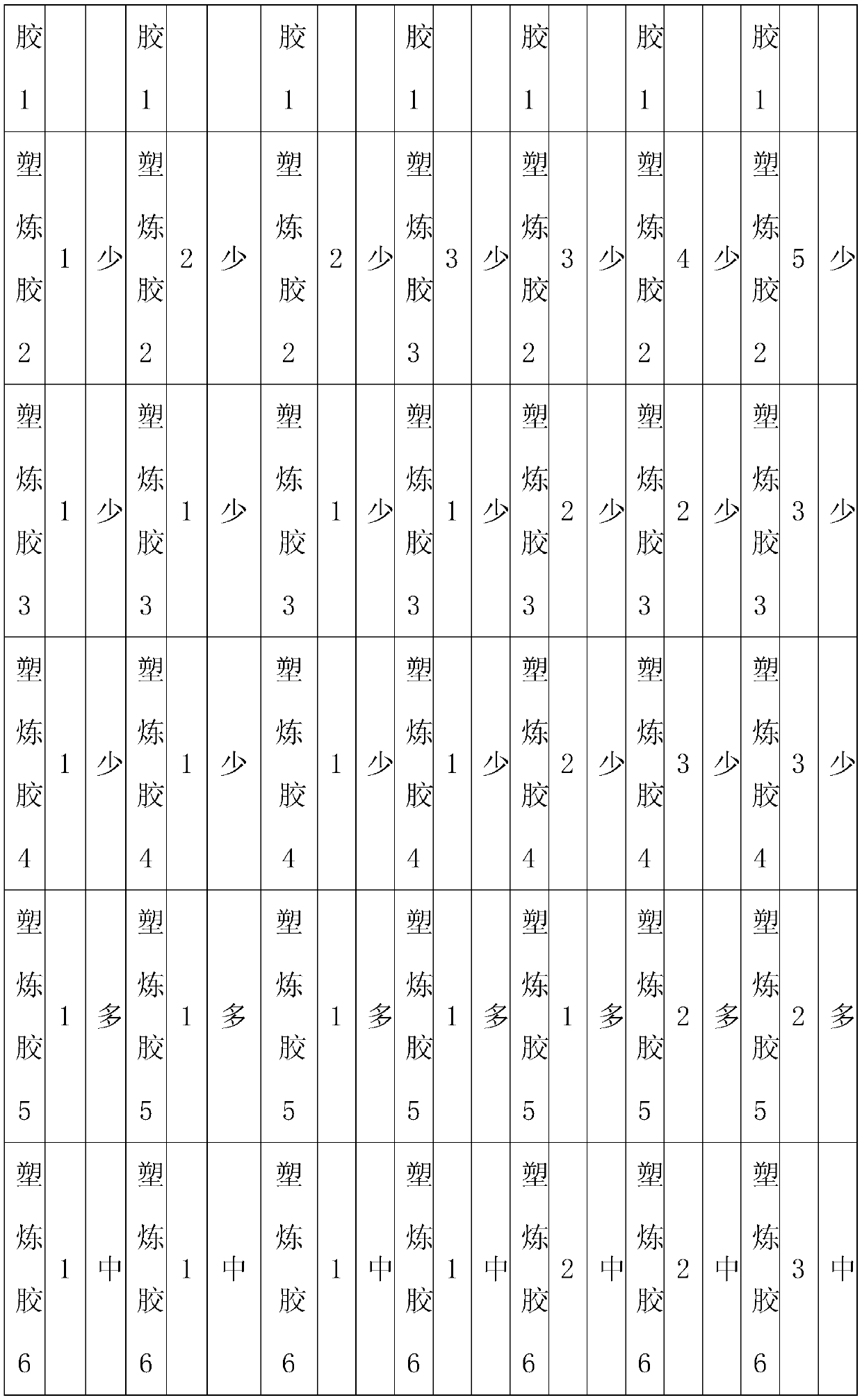Method for delaying adhesion of plasticated rubber sheets from natural rubber
A natural rubber, film adhesion technology, applied in the direction of coating, to achieve the effect of prolonging storage time, simple and flexible process, and reducing environmental pollution
- Summary
- Abstract
- Description
- Claims
- Application Information
AI Technical Summary
Problems solved by technology
Method used
Image
Examples
Embodiment 1
[0019] (1) Put the SCR10 natural rubber block into the internal mixer. The initial temperature of the mixing chamber is normal temperature, the rotor rotates, and the mixer is mixed for 30 seconds. Add the first batch of carbon black, and after mixing for 30 seconds, add the second batch Carbon black, the mixing time reaches 190 seconds, and the mixing chamber temperature reaches 155°C to discharge the rubber, and hot plasticized rubber is obtained;
[0020] (2) The hot masticated rubber obtained in step (1) is dipped in a release agent and then cooled to 60° C., and the pieces are dropped and left to stand to obtain the anti-sticking plastified rubber 1.
[0021] Among them, 100 parts of SCR10 natural rubber block, rotor speed of 50 revolutions / min, 1 part of N220, 6 parts of N330, 3 parts of N660, and 10 parts of carbon black by total weight.
[0022] The dilution ratio of the release agent is 10%. The release agent is 100 parts of distilled water, 8 parts of fatty acid sodium and...
Embodiment 2
[0024] (1) Put the SCR10 natural rubber block into the internal mixer. The initial temperature of the internal mixing chamber is normal temperature, the rotor rotates, and the internal mixing is carried out for 30 seconds without adding carbon black. Plastic compound;
[0025] (2) After dipping the hot plasticized rubber obtained in step (1) into a release agent and cooling to 60° C., the pieces are dropped and left to stand to obtain the anti-sticking plasticized rubber 2.
[0026] Among them, 100 parts of SCR10 natural rubber block, rotor speed of 50 rpm, and 10 parts of carbon black.
[0027] The dilution ratio of the release agent is 10%. The release agent is 100 parts of distilled water, 8 parts of fatty acid sodium and 2 parts of fatty acid potassium, 5 parts of pottery clay, 3 parts of surface active agent, 5 parts of light calcium carbonate and 4 parts of defoamer.
Embodiment 3
[0029] (1) Put the SCR10 natural rubber block into the internal mixer. The initial temperature of the mixing chamber is normal temperature, the rotor rotates, and the mixer is mixed for 30 seconds. Add the first batch of carbon black, and after mixing for 30 seconds, add the second batch Carbon black, the mixing time reaches 190 seconds, and the mixing chamber temperature reaches 155°C to discharge the rubber, and hot plasticized rubber is obtained;
[0030] (2) The hot plastified rubber obtained in step (1) is dipped in a release agent and cooled to 60° C., and the pieces are dropped and left to stand to obtain the anti-sticking plastified rubber 3.
[0031] Among them, 100 parts of SCR10 natural rubber block, rotor speed of 50 revolutions / min, 1 part of N220, 6 parts of N330, 3 parts of N660, and 10 parts of carbon black by total weight.
[0032] The dilution ratio of the release agent is 5%. The release agent is 100 parts of distilled water, 8 parts of fatty acid sodium and 2 par...
PUM
 Login to View More
Login to View More Abstract
Description
Claims
Application Information
 Login to View More
Login to View More - R&D
- Intellectual Property
- Life Sciences
- Materials
- Tech Scout
- Unparalleled Data Quality
- Higher Quality Content
- 60% Fewer Hallucinations
Browse by: Latest US Patents, China's latest patents, Technical Efficacy Thesaurus, Application Domain, Technology Topic, Popular Technical Reports.
© 2025 PatSnap. All rights reserved.Legal|Privacy policy|Modern Slavery Act Transparency Statement|Sitemap|About US| Contact US: help@patsnap.com



